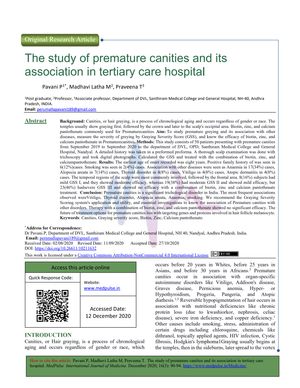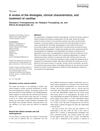The Study of Premature Canities and Its Association in a Tertiary Care Hospital

TLDR Premature graying of hair is often linked with other health issues, but treatment with biotin, zinc, and calcium pantothenate is not very effective.
The study conducted from September 2019 to September 2020 included 50 patients with premature canities, aiming to investigate its association with other diseases and the effectiveness of treatment with biotin, zinc, and calcium pantothenate. The earliest onset of premature canities was at age 8, with a positive family history in 12% of cases. Associations with other diseases were found, including anemia (34%), alopecia areata (14%), thyroid disorders (8%), vitiligo (8%), and atopic dermatitis (8%). The temporal regions were most commonly affected. The Graying Severity Score (GSS) was used to measure severity, with 16% of subjects showing mild GSS I and moderate treatment efficacy, 38% with moderate GSS II showing mild efficacy, and 46% with severe GSS III showing no efficacy from the treatment. The study concluded that premature canities is a significant condition in India, often associated with other disorders, but the treatment with biotin, zinc, and calcium pantothenate was not significantly effective. The study suggests that future treatments should focus on the genes and proteins involved in hair follicle melanocyte function.



